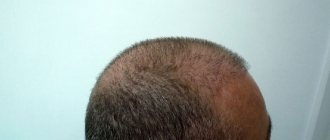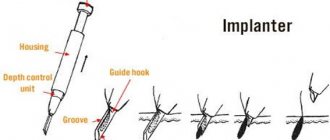Stress, difficult living conditions, irregular sleep and irregular diet along with genetic factors are the main causes of hair loss problems in many people today. Hair transplantation, in turn, is the most effective method to solve this problem, as it has a direct impact on increasing a person’s self-confidence and social life.
At the same time, it should be noted that hair transplantation is a long process consisting of three stages. This process can be considered as the periods Before Hair Transplant Surgery, Hair Transplant Surgery and After Hair Transplant Surgery. Patient awareness of the post-surgery process, which is the last stage and directly affects the success of the procedure, is of particular importance. After a hair transplant, the patient needs to stay in touch with his doctor.
Is it possible to have sex after hair transplant surgery?
The short answer is yes. You can have sex as early as 5 days after hair transplant surgery , since before this it is important to ensure the flow of all nutrients to the scalp for wound healing. On the sixth day, the condition of the hair follicles stabilizes, and having sex will not harm them in any way. When doing this, it is important to ensure that you do not touch, scratch or hit the area where the hair was transplanted. Also warn your partner that it is better not to touch your head.
WHAT HAPPENS AFTER THE DONOR AREA IS DEFINED?
The doctor analyzes the patient's facial anatomy (location of facial muscles, hair density, size of balding area and face shape) and then determines the appropriate front hairline, taking into account the client's wishes. After this, the doctor decides where the border of the transplant area, hairline, and donor area will be, and marks your skin with a special pen.
During the planning stage, it is very important to take into account the patient’s age and face shape, as well as personal wishes. Your doctor will determine the most appropriate and aesthetic style based on your appearance and preferences.
Is finasteride necessary after hair transplant?
Finasteride is a hair loss medication for men and women that is taken orally. If you stop taking it, hair loss will resume. Side effects of taking finasteride include an increased risk of prostate cancer, erectile dysfunction and decreased libido. After undergoing a hair transplant , it is not necessary to continue taking finasteride as the transplanted hair will not be sensitive to the hormone dihydrotestosterone, which causes hair loss, since the hair follicles transplanted from the back of the scalp are immune to this hormone. It is worth discussing this issue with your doctor if he or she recommends that you take this medication after your procedure.
Follicular unit does not renew
Today, the problem of baldness is becoming increasingly widespread among the male and female half of the population. The reason for this may be various factors. Once an area of the head has been subject to baldness, normal follicular units will no longer appear on it.
A follicular unit is a unit of scalp hair that can include from one to four or five hair follicles. Each of these bulbs can produce one hair.
There are areas on the human head that are highly susceptible to baldness and those that are not. The first includes the crown and temples. The back of the head is more resistant to hair loss. Hair can also be transplanted from other parts of the body.
Will my hair be thicker after transplantation?
Before the procedure, you may be wondering whether you will be able to restore hair throughout your entire head after transplantation. Unfortunately, after a hair transplant, it is impossible to restore all the hair. It should be understood that thanks to this operation, your own hair is distributed more evenly throughout the scalp, transplanting it from one place to another. You don't get new hair. Hair transplantation allows you to achieve a better appearance, but your hair will no longer be as thick as before you went bald.
In one hair transplant , up to 35% of the original hair density can be restored. After this, an additional procedure can be performed to increase hair density if there are enough follicles in your donor area. The procedure for increasing hair thickness also has its limitations and depends on the size of the donor area and the number of hair follicles it contains. The thickness of the hair depends on how close the hair follicles are located.
If your baldness has reached degree 6 on the Hamilton-Norwood scale, and you would like to restore your original hair density (which is about 200 bulbs per square centimeter), where can you get so many grafts? The number of hair follicles in your donor area is limited, but doctors will definitely do everything possible to achieve the best results in your situation, even if there are only a few follicles to be transplanted. The number of hair follicles can only be increased through cloning, but such technology does not exist yet. However, if you have level 3 baldness on the Hamilton-Norwood scale, initial thickness can be achieved over many sessions.
WHAT DOES THE NUMBER OF HAIR FALLS AVAILABLE FOR TRANSPLANT DEPEND ON?
The number of grafts available for transplantation in the donor area may depend on the following factors:
- The structure, size and texture of the scar left by the FUT (follicular unit transplantation) hair transplant, if it was performed.
- Significant fat layer on the back of the neck due to excess weight.
- Skin diseases such as psoriasis.
- The number of bulbs extracted may be relatively low in patients with curly hair, since the bulbs are located at an angle.
Will hair grow from all follicles transplanted using the FUE method?
Or, in other words, how many of the transplanted bulbs will survive? The percentage of transplanted bulbs that remain viable depends on many factors:
- Doctor's experience.
- Experience of medical personnel who will assist in bulb transplantation.
- The temperature of the environment in which the bulbs will be kept after being removed from your scalp.
- The humidity of the environment in which the bulbs will be kept after being removed from your scalp.
- The solution in which the bulbs will be contained.
- The general environment in which the bulbs will find themselves after removal.
- The length of time the bulbs will remain outside your skin.
Obviously, there are too many factors that make calculating bulb survival difficult. Hair transplant operations take place in different ways and are performed by different doctors. It's best to discuss this issue with your doctor - ask him or her how you can maximize bulb survival. Typically, hair grows in cycles, and after transplantation, the growth cycle will continue for about three months depending on what phase the bulbs were transplanted in, and the next one will take about 18 months.
If all stages of hair transplantation are carried out properly by a professional and experienced doctor, then the number of viable hair follicles will be higher. If the doctor turns out to be unqualified or if the procedure is unsuccessful, the number of bulbs will be reduced. This is why it is so important to find the best hair transplant center that has the most experienced doctors and staff.
previousNUTRITION AND FOOD SUPPLEMENTS IN CASE OF HAIR LOSS nextHair fibers - a remedy for hair loss?
A to Z Guide to Hair Restoration in Turkey
All stages of hair transplant treatment are very sensitive processes and these processes must be planned and executed in the best possible way to achieve a successful outcome. This article that we will share with you is a guide that provides step-by-step information about pre-operative consultation and analysis, how hair transplant procedures are performed in Turkey, and the recovery process after surgery.
We have outlined everything for those who have decided to get a hair transplant and want to travel to Turkey, also for those who are hesitant and would like to know more about hair transplant.
Hair Transplant Center in the World – Türkiye
Turkey is one of the world's leading countries in the field of health tourism, especially due to its success in aesthetic surgery, making the country the most preferred destination. Hair transplantation, however, can be seen at the top of the list of aesthetic surgeries performed in Turkey. Here are the main reasons why hair transplant centers in Turkey are the number one choice for European and Middle Eastern patients in particular:
- Patient satisfaction
- Very successful surgeons in this field
- High standards of hair transplant centers
- Much lower prices compared to Europe and America
- Quality of service according to European and American standards
- Successful results
Turkey has managed to stay ahead of its competitors in hair restoration with an exponentially growing number of patients every year.
Turkey's $1 million hair restoration trade volume
Having become the world's most preferred country for hair restoration, the most important reason for Turkey to achieve the industry's first million-dollar trade volume is the very favorable prices compared to Europe and America. Of course, there are a number of reasons why Turkey is able to offer such good medical care at such affordable prices without sacrificing quality and global health standards in hair transplantation.
- Low costs
- Cheap labor
- Affordable luxury housing
The main reason why Turkey has become a center of attraction in hair transplantation is to provide high quality services at affordable prices. Performed by successful doctors in a hospital setting suitable for surgical procedures, hair transplantation is successful and cost-effective.
Healthcare is under tight control in Turkey
When it comes to healthcare, you need to be able to count on control. Another important factor that takes the country to a very high level of hair restoration is the supervision carried out by the Ministry of Health of the Republic of Turkey itself. In Turkey, hair care specialists must have the following clinical features:
- Certificates of compliance with international health standards
- Surgeries performed by licensed surgeons
- Sterilization and operating conditions
- Measures against blood-borne diseases
- Maximum patient protection from the risk of infection
- Certificates of compliance with international hair transplant procedures
Continuous progress and modern methods of hair transplantation
Turkish doctors, who have achieved many successes in aesthetic surgeries and other fields of surgery, closely follow the development of medicine and technology.
Our doctors and clinics have shaped aesthetic trends in hair restoration and have gained a reputation throughout the world. They follow the ever-progressing hair transplantation techniques, latest techniques and technological developments.
These factors that we have mentioned here are the main reasons why Turkey has become the center of attraction in hair restoration. Should we also add tourism benefits to traveling to Turkey for hair transplant?
- Accommodation in five-star hotels in Istanbul
- The opportunity to become a tourist in one of the most beautiful cities in the world
- Spending time in a metropolis intertwined with history
- Purchase
- An opportunity to get acquainted with the famous tastes of Turkish cuisine
How does the hair process in Turkey work?
In recent years, hair transplantation has developed and progressed so much that many people who have lost their hair are experiencing incredibly good results. The number of people who have had hair transplants is increasing day by day. Celebrities, ordinary people, women and men, no one is doomed to go bald anymore. But there are several cases where it does not work, the expected results cannot be achieved due to the wrong method. It is very important for the patient to obtain information regarding this process to avoid such problems.
There are so many people who hide their sadness over hair loss, pretend to be at peace with themselves, are afraid of hair transplant surgery and have fears... You are not alone and your worries are normal.
You don't have to look for the answer to your hair transplant questions on your own, you don't have to put off your hair transplant and give up on your dreams because of your worries. This is a process that you need help with, you need expert support.
The leading Turkish hair transplant center Estepera Hair Clinic has a system for planning and managing all hair treatment processes in 5 simple steps in communication with the patient.
- Free consultation service
The first step before traveling to Turkey for hair transplant is a meeting between the patient and the doctor to clarify some issues. Understanding whether the patient is suitable for hair transplantation is the main purpose of this interview.
Cause of Loss: Analyze the cause of hair loss by answering questions such as the patient's age, family history of hair loss, when it started and severity. Understanding whether there is a condition like ringworm that cannot be solved with hair transplantation is one situation that you should be sure of before you go on your journey.
Age and condition of hair loss: Stability of hair loss is one of the desirable conditions for hair transplantation. If the patient is very young and hair loss is just beginning, you may have to wait.
Blood test : The patient may be asked for blood test results to determine if hair loss is caused by a medical condition.
- Tour Tour
The second step after ensuring that there are no obstacles to the transplant is to schedule your hair transplant appointment and determine the date of your flights to Turkey.
The cost of the airfare belongs to the patient. The clinic staff will meet you at the airport and you will be transferred in the same way after the operation. Your access from the clinic to a five-star hotel is also provided by the clinic with VIP cars during your stay in Turkey.
- Interview and exams with the doctor before surgery
This is the stage where the technique is determined by analyzing the hair and scalp.
- Hair examination
This is the stage at which situations regarding the color, structure and quality of the hair are determined. Because gray hair is more difficult to harvest and transplant, the color of the hair in the donor area is checked before surgery, and sometimes coloring may be required. The fact that the hair is curly or straight is one of the most important details in hair transplantation. This process is important to determine the correct method, especially for Afro-type curly hair. Having hair that is too thin, even if the transplant was successful based on the root, it may not be enough to achieve the expected result. From the point of view of successful hair transplantation and obtaining a satisfactory result, communication between the patient and the doctor and examination of the hair are the most important stages.
- Blood analysis
Anemia is not common among men, and ninety percent of hair transplant patients are men. As per international health regulations, all patient's blood counts are checked and blood tests are performed before any surgical procedure. In addition, laboratory testing is mandatory to detect blood-borne diseases such as hepatitis and HIV.
- Evaluation of data and determination of hair transplantation method
After confirming that the patient is suitable for hair transplantation through a hair examination and blood test, the medical professional shares the entire test with the patient and communicates the possible result. It is specified which hair transplant method to use and how many grafts will be transplanted. Accordingly, the duration of the procedure on average becomes predictable, and the patient becomes aware of it. This is the stage where all questions are answered and problems are resolved before the operation.
- Operation
If you are landing in the early hours of Turkey, transport can be provided directly to the hospital and once preparations are completed, the hair procedure can be carried out on the same day. Or, after exams are completed on the first day, surgery may be scheduled for the next day. On the morning after the operation, a VIP car will pick up the patient from the hotel, and after the operation is completed, the driver will take him back to the hotel.
- First wash
One or two days after the operation, the patient is first examined and his head is washed by a doctor, hair transplant specialist or nurse.
In 5 steps, the process is successfully completed. So, what is hair transplantation? What are the stages of the operation? What's going on with you?
Stages of hair transplant surgery
Once the hair transplant is planned and the method to be used (FUE, DHI or FUT) is determined, in short, the first step is to draw the hairline. The next step is to shave the head or donor area after the patient and doctor have agreed on the hairline. Once the scalp is numbed under local anesthesia, hair follicles are collected from the donor area. The canals are opened in the receiving area where the follicles are supposed to be placed, and then the roots are inserted into the holes.
- Hairline
On the day of your hair transplant, your nurse prepares you for surgery and then your doctor draws your hair line. You can think of your hairline as a boundary. The operation begins after confirming the line and shape.
- shaving
Depending on the method used, the subject of shaving may vary. While regional shaving may be sufficient, there are also methods that are performed without shaving. Full shaving may also be preferred due to benefits such as preventing infection and making surgery easier.
- anesthesia
The painful part of the operation is this stage where anesthesia is applied. Usually there is no pain after this. Anesthesia is the numbing of the scalp using drugs that block the nerves, which temporarily transmit pain to the pain center in the brain. First, anesthesia is applied to the area where the hair follicles will be harvested. The area where the roots will be planted is then also given local anesthesia.
- extraction
The hair roots are collected one by one with FUE and FUE versions being used more frequently in recent years. The number of follicles to be extracted varies depending on the width of the receiving area, and the length of the process will depend on this. The larger the area of baldness, the longer the extraction process, the process of opening the canal and planting may take.
- Preparing the receiving area
This is the process of transferring the extracted hair follicles to the numb area under local anesthesia. At this stage, incisions are made on the scalp using various instruments and techniques.
- Hair transplantation
This is the process of placing the hair follicles, collected and ready for transplantation, into the canals and is the last stage of the operation. Once the procedure is complete, a wound protectant is applied and the patient can continue with their daily activities if they wish.
Surgical methods used for hair restoration in Turkey
Hair Transplant in Turkey, FUE, Unshaved FUE and DHI hair transplant methods are widely used in Turkey. These are the latest and very successful methods in terms of results.
Hair transplantation using FUE method
FUE (Follicular Unit Extraction), which has caused a major surge in hair transplantation, is a surgical procedure performed under local anesthesia. The person's strong and durable hair follicles are transferred to the balding area, allowing hair to grow back. After anesthesia is applied, hair follicles are removed one by one from the donor area. Follicular separation is performed and then they are ready for transplantation.
Once this process is completed, the second stage of the operation begins. To transplant the extracted grafts, incisions are made in the scalp.
Finally, the follicles are transplanted into channels open on the scalp. Depending on the number of incisions and grafts, the operation may take several hours or even longer.
Who is suitable for FUE hair transplantation?
Anyone who wants to have a hair transplant, is suitable for the operation and has no obstacles to the operation can get their hair back using the FUE method.
What are the advantages and disadvantages of the FUE method?
- The fact that the roots, extracted individually, are replanted one after the other eliminates any problems associated with the direction of the hair and the way it grows.
- This provides a more natural image.
- The most important thing is that, as in the FUT method, there are no scars left on the back of the head, in the donor area.
- Since hair follicles were used along with the entire tissue in FUT hair transplantation, the extraction process was short. However, scars remained and since root extraction could not be done individually, sometimes the results were not as expected. When using the FUE method, the operation time is a little longer, but considering the results, it is not difficult to see that it is worth it.
Hair transplantation using DHI method
Direct hair implantation is a hair transplant method in which the FUE technique is applied using a surgical pen called CHOI Pens. For the root transplantation process, extracted using the Choi pen, there is no need to open canals or make incisions, hair transplantation is performed directly using the implanter pen. This is the latest technological status of medicine, which includes the FUE method, and it is quite successful.
Who is suitable for DHI hair transplantation?
All patients who have no barriers to hair transplantation, those who want their hair back and are suitable for the FUE method, can undergo hair transplantation with DHI.
What are the advantages and disadvantages of the DHI technique?
- With DHI, the time spent in surgery is significantly reduced.
- Since the CHOI Implanter needles are very thin, the operation is almost painless.
- Patient comfort is maximum.
- More successful results are obtained because the hair follicles are much less damaged during extraction and transplantation.
Am I eligible for hair treatment, can I come to Turkey for hair transplant?
It is the dream of every person who has lost their hair to naturally get it back through a procedure that can bring better results. But at this stage, by properly analyzing your current situation, understanding the causes of baldness and being realistic about the results that can be achieved with treatment that meets your expectations, both disappointment and financial damage are prevented.
Therefore, understanding whether a patient is suitable for hair transplantation or not is the most important step in the treatment.
Why did you lose your hair?
If you do not have any autoimmune diseases, unless you have lost your hair due to diseases such as ringworm or androgenetic alopecia, you are suitable for hair transplantation. Genetic causes, traumatic hair loss, stress-induced baldness are situations that can be treated with hair transplantation.
Do you have enough donor area?
You may be suitable for a hair transplant, but if you have an insufficient or qualified donor area, you may not be a suitable candidate for a hair transplant. Having enough strong hair follicles on the back or sides of the head is the second condition for hair transplantation.
Is the loss still active?
Hair transplantation, which is carried out immediately after the onset of hair loss, especially in young people, can make the patient unhappy as it will not stop the ongoing hair loss. It is important that the hair loss is stabilized so that the balding and remaining hair becomes clear.
The loss had to stop to understand the quantity and quality of hair follicles that would be used as donors. The area for transplantation must be determined and the possibility of loss of planted hair must be excluded.
Is your health suitable for surgery?
Hair transplantation, no matter how small, is an operation and the patient's physical health must be comfortable for the operation. If you have any chronic diseases, you should evaluate this with your doctor.
What hospital, what doctor?
When undergoing hair transplant, it is very important that the hospital, team work according to hygiene and health conditions. The success of hair transplantation is largely due to the ingenuity of the surgeon. For this reason, it largely determines where you have the procedure done and who has it done.
Check the list below to make sure you are at the right clinic:
- Make sure you have a free consultation and the cause of your hair loss is analyzed.
- Make sure doctors are licensed.
- Check the before and after files, find out how many cases they had.
- Avoid low-cost centers.
- Read patient comments.
- Make sure the surgeon is performing the operation.
- Make sure you are in a hospital.
Preparing for surgery
The subsequent period from the date of your trip to Turkey for hair transplant until the day of your procedure can be summarized as follows:
- Two or one week before surgery
- Leave the blood thinner, antibiotic and vitamin regiment in the blood.
- Don't drink alcohol.
- If possible, quit smoking for a while.
- The day before surgery
- Rest, sleep.
- Wash your hair as usual.
- Do not apply heat treatment or use a hair dryer.
- Don't cut your hair
- Morning of the operation
- Wear a T-shirt with a button-down or a wide neck so you don't have to pull it over your head.
- Have a nice breakfast.
- Stay away from coffee this morning.
After operation
Carrying out a successful operation, hair follicle transplant better than we promised, is our job as a clinic, but cooperation with the patient, especially in the first two weeks after the operation, is one of the factors that increases the success of hair transplant one hundred percent. As Estepera Hair Clinic, we expect our patients to follow the instructions we give and gently treat themselves and their hair follicles during the healing process.
- Protect from shock
- Keep away from the sun
- No shower for the first two days
- Follow wound care instructions
- Protect your head from pressurized water
- Do not scrub or scratch your scalp while showering.
- Avoid sports or any strenuous activity for the first week
- Stay away from alcohol
- Stay away from hair dryer
- When sleeping, try to sleep at a 45 degree angle to prevent swelling.
- Dress your body comfortably to support blood circulation.
After the first two weeks pass in a healthy manner, hair loss begins from the wound membranes during the healing process. This is a good sign. This means there is little time left for your new hair.
When will I receive my new look?
When you emerge from surgery, your hairline and root density will give you the first idea of what's to come. When you leave the first three months behind, you will also leave behind the hair transplant process. The surgery and wounds have healed and the scalp has returned to normal.
During this period, it is normal for conditions such as excessive oiling and pimples on the scalp. Estepera continues to monitor her patients through this process. In any extreme case, you should definitely contact your clinic. After the first six months, the transplanted hair becomes visible. His hair color and thickness may be weak. Hair needs time to strengthen. Maximum results may take 8 to 10 months, sometimes a year.
In a successful clinic, after hair transplant with master hands, patients who follow the instructions during the care process will have natural hair with the same strength as the original hair. You will continue to use your new hair the same way as before.
Postoperative risks of infection
The conditions under which a hair transplant is performed are the first important factor that determines the risk of infection. Sterilization in the operating room or suitability of the surgical environment determines the risk of infection.
Protecting your scalp and wound is very important in the first week after surgery. Despite taking all precautions and maintaining sterile conditions, sometimes infection can be an inevitable result. The body may react to surgical situations as a self-protective reflex, even without reason.
Contact your doctor right away if you have any of the following conditions
- Non-stop bleeding
- Severe itching or tingling
- Strong pain
- Increased bloating
Wound care
After the first check and wash, the patient should not use any other medications or supplements other than our clinic's prescription.
A tourist caravan who had a hair transplant walked through the streets of Istanbul
Türkiye is one of the most popular tourist destinations in the world. We are used to receiving hundreds of thousands of guests from all over the world in the summer in Istanbul, on the coast of the Mediterranean and Aegean seas. The number of visitors coming to Turkey for hair transplant has increased so much in recent years that after hair transplant, you can see them walking along the historical streets of Istanbul, you can meet many wellness tourists smiling at you as a get well. ,








